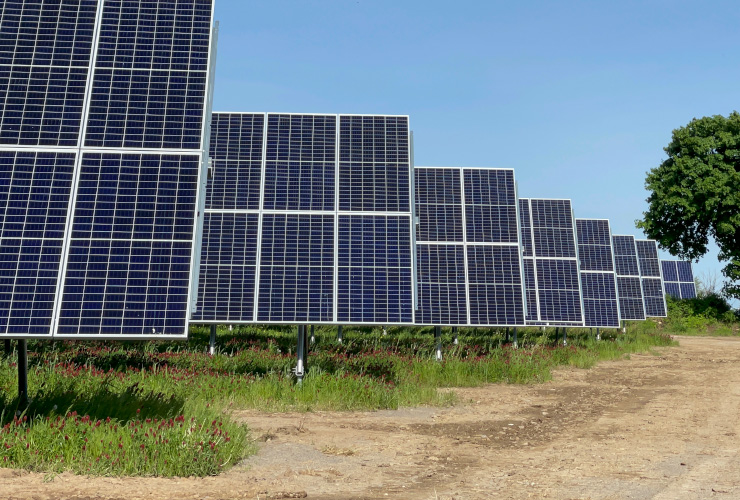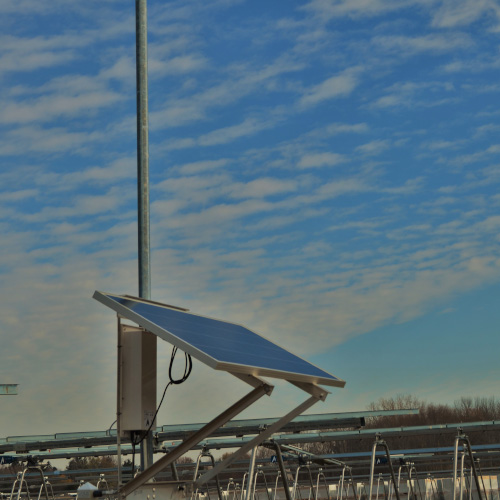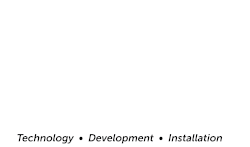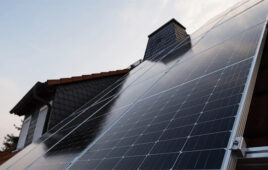
By Andy Fouse, Director of Software Development
The perennial question for solar developers and asset owners is how to increase energy yield from solar sites. After all, higher energy production equals better power purchase agreement (PPA) competitiveness, improved margins, and a greater potential for increased ROI.
Solar trackers are the answer. Thanks to their ability to track the sun’s movements, trackers produce significantly higher energy than their fixed-tilt counterparts—up to 35% more power when combined with bifacial panels. Once considered risky investments, trackers are now outperforming fixed-tilt systems in most markets.
A key driver to this growth is advancements in tracker technology, as manufacturers innovate products to be more reliable and adaptable. The trackers of today are sturdier than their predecessors, despite using less steel and having fewer components, while improvements in installation and site design techniques also enable new avenues for tracker development, even in areas with difficult terrain and weather.
With the mechanical components of trackers becoming more robust and adaptable, controls and software will likely take centerstage in the next phase of tracker growth. Developers and asset owners will need to leverage the power of intelligent tracker technology to boost energy production and optimize tracker performance, giving your projects better returns and a competitive edge in the long run.

5 key features to look out for in intelligent tracker software
Investing in trackers is not without risk. Failing to implement the right tracker solution can drag down budgets and hamper your potential. Aside from durable mechanical parts, intelligent software is an essential component that cannot be overlooked. Here are five things to consider:
- Adaptive machine learning
Days get longer and shorter throughout the year, and since trackers work to optimize the angle of incidence (where sunlight hits the surface of PV modules), tracker technology must be dynamic to account for these changes. Adaptive machine learning uses data and algorithms to build a projection of where rows should be at different times of the day, optimizing their positions to gain maximum sunlight exposure.Another way machine learning can boost energy production is by reducing shading. Shading can damper energy yield —but with backtracking algorithms, the software can determine when a row is shading from east to west and position modules accordingly to avoid casting a shadow on adjacent rows.
- Smart weather API and sensors
Weather was once a major hindrance to tracker projects, but with developers building in regions with harsher weather, tracker technology has also evolved to better mitigate risks. On-site weather stations are equipped with sensors that send data to the network controller, which commands sites to stow whenever snow and wind thresholds are crossed. And instead of waiting for bad weather, smart weather API takes a proactive approach by predictively stowing sites before the event occurs. - Real-time monitoring capabilities
The only way to optimize operations is if you know how your sites are always performing. Intelligent tracker technology enables operators to fix issues before they affect performance, saving on cost and mitigating worst-case scenarios. Features such as an easy-to-use dashboard with a project map that gives you a quick overview of your sites across multiple devices, including desktop and mobile, ensures you’re alerted and can address issues quickly, even while on the go. - Convenient troubleshooting
Predictive analytics are used to surface issues that were once buried, while machine learning tells us when a row isn’t tracking on its normal path. Back in the day, an error in the system would mean rolling a truck on site, translating to a lengthy time to diagnose an issue and loss in productivity. The right tracker software solution should provide the ability to not only monitor assets in real-time, but also diagnose issues remotely via a simple-to-use interface. Look for tracker software where data is stored in the cloud, so you can easily access historical data and run predictive analytics to identify potential issues. - Remote updates
As tracker software continues to innovate, new functionality will make sites more efficient and boost productivity. Good tracker software allows for sites to receive new and improved features seamlessly, without having a person on site. With remote updates, previously built sites can easily benefit from new functionality, ensuring they evolve as the technology does.
Ready to get on the right track?
While industry headwinds such as the limited availability of land and rising costs can make trackers challenging to develop, the potential for returns is also commensurate—provided you are well-equipped with the right solution and accompanying expertise.
Terrasmart’s PeakYield™ technology and TerraTrak racking offer a comprehensive solution that covers all the bases: the former utilizing software intelligence and site design techniques to optimize your tracker’s performance; the latter providing a durable racking solution that integrates with both ground screws and piles to eliminate refusal risk. Paired with Terrasmart’s expertise in developing tailored solutions based on a collaborative approach with clients, you can take your projects to new heights and discover opportunities for growth in areas never thought possible.
Learn more about Terrasmart’s intelligent tracker technology, PeakYield™, in our ebook and see how it can help you scale new heights in energy production.
Learn MoreSponsored Content by Terrasmart





Tell Us What You Think!